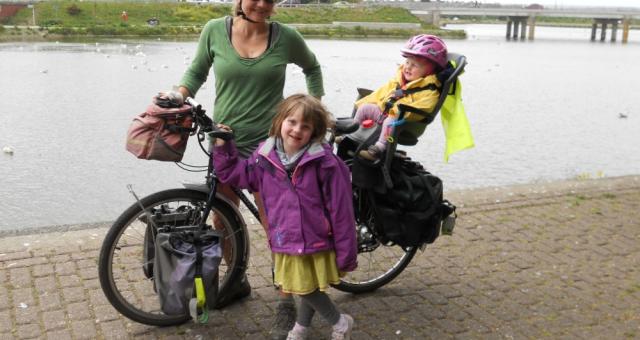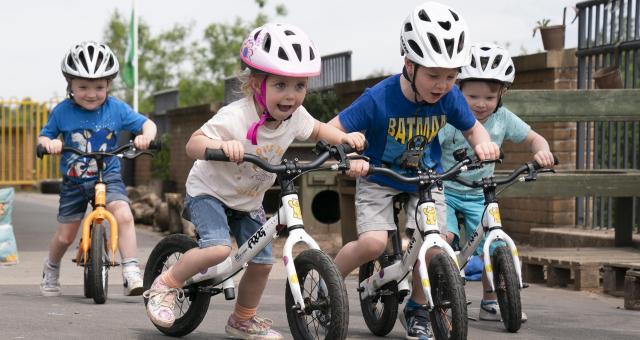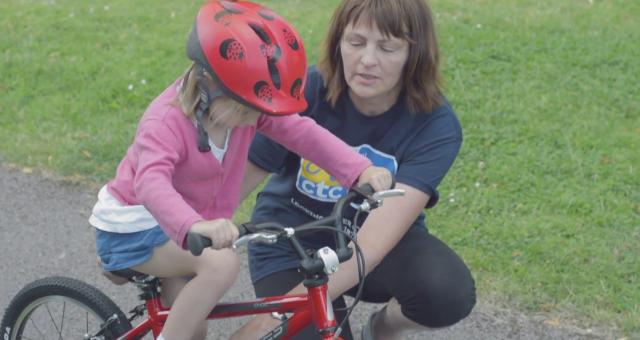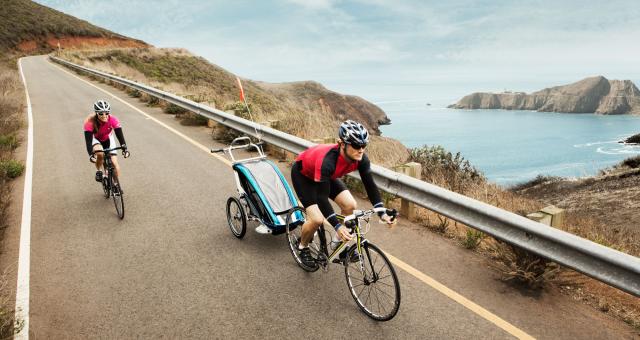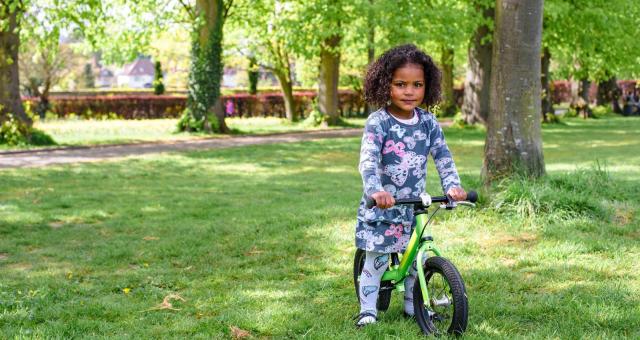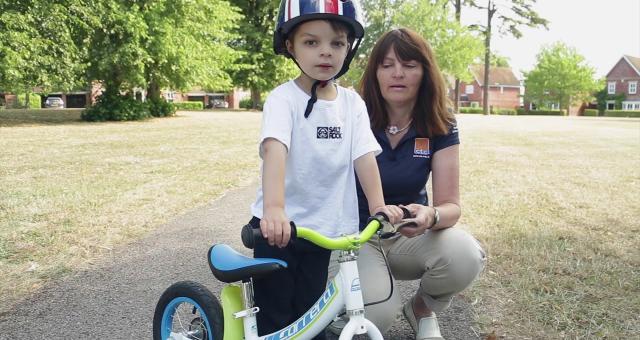A guide to buying the best balance bike

Balance bikes are small starter bicycles for pre-school children. They lack pedals: the rider scoots along the ground, pushing off with alternate feet, then lifting both feet to coast.
Using a balance bike teaches a child two of the most essential kills that make cycling possible: balancing and steering. Many balance bikes also come with a brake. Pedalling might seem a fundamental skill but is easily incorporated later.
A child who starts on a bike with stabilisers will need to learn the more difficult skill of balancing later, and older children may get scared when the stabilisers are taken away.
It’s a good idea to test ride any bike before buying, but that’s even more the case with a child’s bike. You need one your youngster likes and can use easily – otherwise it could all end in tears. Test as many as your toddler will put up with!
For more information watch Cycling UK’s Video: How to teach a child to ride a balance bike and read our guide.
What to look for when buying a balance bike
Weight
The lighter the better. The average weight for a three-year-old in the UK is around 14kg. The weight difference between the lightest and heaviest bikes here is 2.11kg. That’s 15% of the child’s total body weight. Don’t forget, you will also end up carrying a balance bike a lot, possibly all the way home from the park.
Steering
A headset with ball bearings will enable the handlebar to turn easily and freely, unlike a plain bearing. Some balance bikes have a steering damper or stop to prevent jack-knifing. Handgrips must be secure. Bulb-ended grips can stop hands slipping off and prevent injury in a fall.
Brake
Shoe soles will stop a balance bike at moderate speeds, but a hand brake is a useful extra, especially for children who like to whizz around. It also teaches a skill that will be needed later. Make sure your child can actually pull the brake lever: too stiff or too big will only teach them that brakes are useless!
Wheels
Pneumatic tyres are lighter, more comfortable and roll better, especially over bumps. The wheels themselves should spin easily and freely, which they’ll do best with (correctly adjusted!) ball bearings.
Saddle
Look for a comfortable and slightly concave saddle to prevent your child from slipping forward. Adjust the saddle height so that your child can put both feet flat on the floor, raising it as he or she grows. A footplate or rest is useful to stop legs flailing during extended coasting.
Cycling UK’s top balance bikes
Hornit AIRO 12"

Price: £139
Further information: Hornit
At just 2.95kg, this is one of the lightest balance bikes on the market, making it an ideal starter bike for youngsters. It’s light enough to carry home from the park and still hold your child by the hand. It doesn’t come with a brake, but the larger 14" AIRO (£169) does.
Its sturdy design and fully adjustable seat ensure it will be durable and long lasting, especially at this affordable price point. It did very well in our review.
Kokua LIKEaBIKE Jumper

Price: £179.95
Further information: Likeabike
This all-aluminium bike weighs 3.4kg and came second in our group test. It’s really good on bumpy ground as it has rear suspension, using an elastomer. It has the lowest initial maximum saddle height of the bikes we tested, so suits two and three year olds, but comes with two seatposts to extend the life of the bike. A brake and mudguards are optional extras.
An added safety feature is a steering limiter to prevent jack-knifing. This can be removed for more advanced riders.
Kidvelo Rookie 12"

Price: £130 (£110 at time of writing)
Further information: Kidvelo
This super-lightweight aluminium alloy bike weights just 2.89kg. Seat and handlebar are adjustable so it’ll grow alongside your child, while the longer than average wheelbase provides plenty of room. The integrated footrest is positioned to mimic where the pedals will be on their next bike.
It’s sturdy, easy to assemble and great value for money.
Frog Tadpole

Price: £230
Further information: Frog Bikes
The Tadpole weighs 4.17kg and comes in six colours. Frog uses scaled down parts and has an easy-to-pull brake lever, too. It comes with a bell. It’s the priciest here, but it has a five-year warranty; perfect if you have more than one child in the family.
Bobbin Moonbug/Gingersnap

Price: from £109 (there is a 15% discount on some colours at time of writing)
Further information: Bobbin Bikes
These two very similar bikes have slightly different looks. Gingersnap comes in pastel colours and has a more curvy frame; Moonbug has a straight frame and a choice of three primary colours. Both come with a wicker basket and bell.
Neither has a brake and they weigh 5kg. The cream tyres will turn greyish very quickly!
Ridgeback Scoot

Price: £124.99
Further information: Ridgeback
At 4.97kg, this is the second-heaviest bike here, it’s relatively long and big, so will suit larger youngsters. It comes with a brake, but this is quite stiff. However, it’s supplied with two seatposts and the handlebar is fully adjustable so your child can keep using it for longer.
It has a bell and comes in a range of colours.
Hoozar Cruz 12

Price: £199
Further information: Hoozar Bikes
This bike’s pneumatic tyres with their knobbly tread make for comfortable riding on all terrains. It only weighs 3.2kg. It’s got brake with very child-friendly lever.
Brakes aren’t a necessity on a balance bike, but they can help confident riders learn the skill early, allowing easier transition to a pedal cycle.


